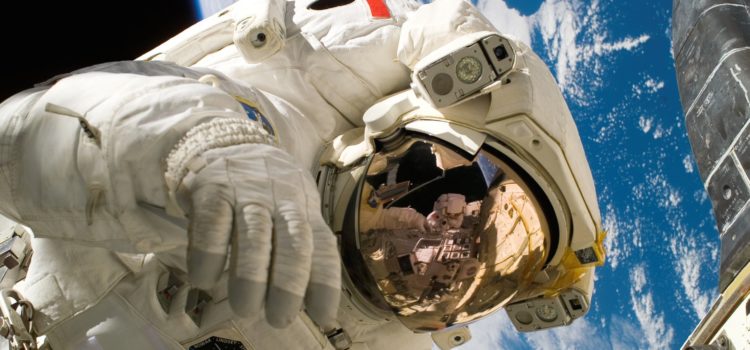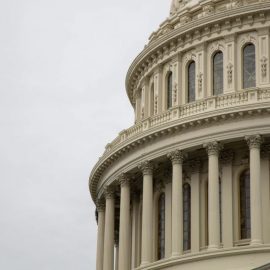
This is a free excerpt from one of Shortform’s Articles. We give you all the important information you need to know about current events and more.
Don't miss out on the whole story. Sign up for a free trial here .
What is the new space race? Who is the race between? What does the future hold for space exploration?
Space exploration largely faded into the background after the end of the Cold War, but it’s coming back with a vengeance. Participants in the new space race are vying for the advantages of establishing a space presence that could set them up for future success.
Read on to learn more about what’s happening with the new space race and who’s involved.
The New Space Race Is Ready for Lift Off
Twelve human beings have walked on the Moon—all of them between July 1969 and December 1972. The “space race” between the U.S. and the Soviet Union that led to these voyages ended soon after those moonwalks, and space exploration programs became a casualty of geopolitical shifts, reluctance to bear the enormous costs, and the diversion of scientific attention to more pressing concerns such as climate change. But now the “new space race” is back on with a vengeance.
In 2022 alone, there were 16 lunar missions, 5 more than In the whole previous decade. Twenty-six more are planned in 2023 and 2024. Many believe we’re on the cusp of a golden age of space exploration. Why the sudden interest? In this article, we’ll look at the main players in the new space race, what they’re racing for, and what’s likely to happen in the long term.
Who’s in the Race?
The field for the new space race is crowded: The 70+ countries that now have space programs are joined by an array of private companies, from gritty startups to billionaire-backed juggernauts. The U.S. and China are the main frontrunners, and while the U.S. has a long headstart, China is catching up rapidly and may even be on track to match or surpass the U.S. within a few years.
What’s the Prize?
Though space missions are extraordinarily expensive, they may eventually reward investments many times over. Let’s take a look at the latest missions involved in the new space race:
Space Mining
Moon rock (regolith) contains both oxygen and helium-3, an isotope of helium that could be used to safely power nuclear fusion plants. Jupiter also has large quantities of helium-3. And asteroids can hold staggering amounts of platinum, gold, iron, and nickel, all of which are in high demand on Earth. Davida, one asteroid in orbit between Mars and Jupiter, has an estimated value of $27 quintillion ($27,000,000,000,000,000,000), many times that of Earth’s entire global economy.
Space Tourism
While the amount of money required to set up a space tourism business is eye-watering, these businesses have huge potential earnings through commercial space flights and luxury space hotels. Blue Origin put its first group of tourists in space in 2021 and for now is offering voyages to celebrities and the extremely rich. Its main competitor, Virgin Galactic, expects to start commercial space flights in the second quarter of 2023 and is selling advance tickets for $450,000 per person. And Startup Axiom Space has already sent three tourists (paying $55 million apiece) on a 10-day trip to the International Space Station.
SpaceX’s dearMoon voyage, planned for late 2023, will fly nine people around the moon. This will be the first commercial flight for the Starship, which has capacity for 100 passengers.
What’s Next?
For the long-term outlook of the new space race, we’re looking at increased financial investment in space and diplomatic challenges.
Increased Financial Investment (and Returns)
An allocation of $25.4 billion to NASA in 2023 increases U.S. funding to space programs by 18% on the previous year, but this still lags behind China’s increased spend of approximately 23%.
In mid-2022, the estimated value of the space economy was $469 billion, and Morgan Stanley predicts that it could be worth $1 trillion by 2040. Even more ambitiously, the Chinese aerospace organization aims to create a “space economic zone” by 2050 that will bring in $10 trillion for China every year thereafter.
Diplomatic Challenges
China insists that its intentions in space are peaceful and cooperative. However, some U.S. officials have expressed doubts, pointing to the country’s aggressive pursuit of its territorial ambitions on Earth. The Artemis accords aim to strengthen the relationships between terrestrial rivals, but China and Russia are not among the 23 signatories to date.

Want to fast-track your learning? With Shortform, you’ll gain insights you won't find anywhere else .
Here's what you’ll get when you sign up for Shortform :
- Complicated ideas explained in simple and concise ways
- Smart analysis that connects what you’re reading to other key concepts
- Writing with zero fluff because we know how important your time is






